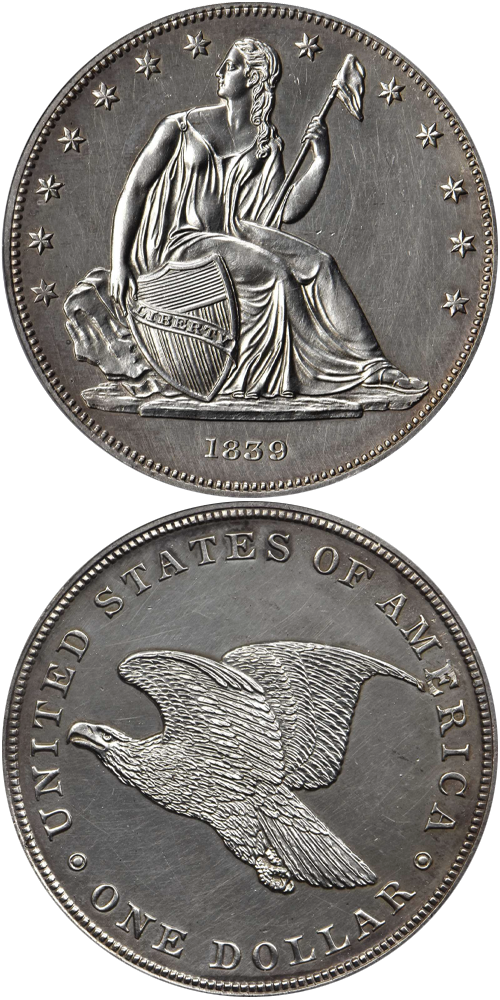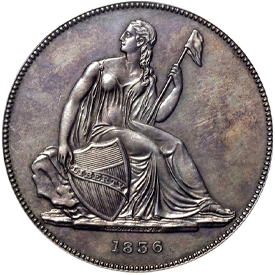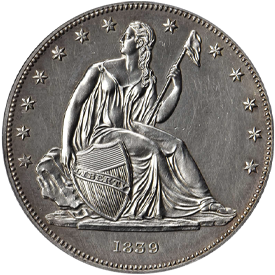After a 33-year hiatus, the mint again turned its attention to the silver dollar. As the nation’s monetary unit, it was felt that even if its use in daily circulation was limited, it was an important coin for the nation’s image and prestige. Mint director Robert Patterson, seeking a more artistic design for the U.S. coinage and perhaps inspired by the seated Britannia appearing on the coins of England, chose a design by Thomas Sully and enlisted the mint’s second engraver Christian Gobrecht to create the dies.
The obverse featured a full figure of Liberty, seated on a rock looking to her right. She holds a liberty cap on a flagpole in her left hand, and supports a large shield with her right hand, on which the word LIBERTY appears on a scroll. The reverse featured an eagle in flight; that design later adopted for use on the small cent in 1856.
Numerous varieties were struck between 1836 and 1839, and principally vary in the presence or absence of stars on the obverse or reverse, the edge treatment, and the die alignment.
The Seated Liberty motif was adopted for use on the half dime and dime in 1837, followed by the quarter in 1838, the half dollar in 1839 and in 1840, regular production of the silver dollar resumed using the design as well. Apparently it proved popular, for it continued in use on all U.S. silver denominations (except the tiny three-cent piece) until its replacement in 1892 by Charles Barber’s design.









